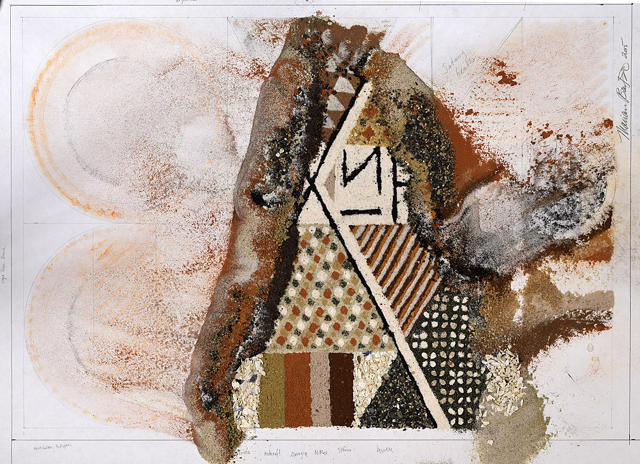Marian Bantjes Makes A Poster Out Of dirt From Her Travels
The “Michelangelo of custom lettering” will get earthy along with her latest impossibly elaborate design.
August 27, 2015
dressmaker Marian Bantjes has been amassing soil and sand from her travels for over six years. After touring to areas as a long way-flung South Africa, Argentina, and the Phillippines—frequently for design conferences—Bantjes returns to her dwelling in Canada with a jar stuffed with the position. Now she’s hanging her collection to good use in an impossibly problematic poster for the Alliance Graphique international (AGI).

To make the poster, Bantjes began with a general pencil drawing of the key divisions and letterforms and then tediously put down more than a few dirts and sands from her assortment, starting from the left corner and working her approach to the underside right. “The supplies differ in size of grains and evenness. The smoothest sand from Thailand was once the perfect to work with. other sands were lumpy or sticky with salt,” she says. “The dirts had been also of varying consistency. because of this very few of them would glide from a spout, so i’d put down a fair layer on the paper after which move it round with a small paintbrush.” Bantjes ground one of the most dirts with a mortar and pestle earlier than the use of, to “make them more obedient.”
If there is one one who might dazzle us with dust it is Bantjes, whose penchant and persistence for labor intensive ornamentation has earned her the title “the Michelangelo of custom lettering” from Steven Heller. After starting off her career as a photograph and sort fashion designer, making clean and easy designs for clients, Bantjes left the corporate world to pursue projects that may allow her to include her now legendary Baroque type. each her 2010 e book i’m wondering and 2014 monograph Marian Bantjes: pretty photos are gorgeous contemporary illuminated manuscripts that showcase her brilliantly advanced lettering and designs.

along with a thoughts-numbing degree of detail, any other theme seen throughout Bantjes work is ephemerality. She’s worked with plant life, pasta, plasticine, and numerous different supplies to painstakingly assemble designs that simplest live on in photos. She estimates that about 1/2 of her work is completed by using hand, and she or he’s discovered herself leaning increasingly more toward the route of analogue.
“It’s a ordinary theme for me, and that i do it as a result of I enjoy it. I in finding that working with my hands is infinitely more relaxing and rewarding than engaged on the pc,” she says. As for the filth, Bantjes says she handiest used a small quantity of her assortment and is saving the remaining for future tasks. “I’ll keep collecting, so I are expecting I’ll do this once more at some point.”
[All Images: Courtesy Marian Bantjes]
(83)














